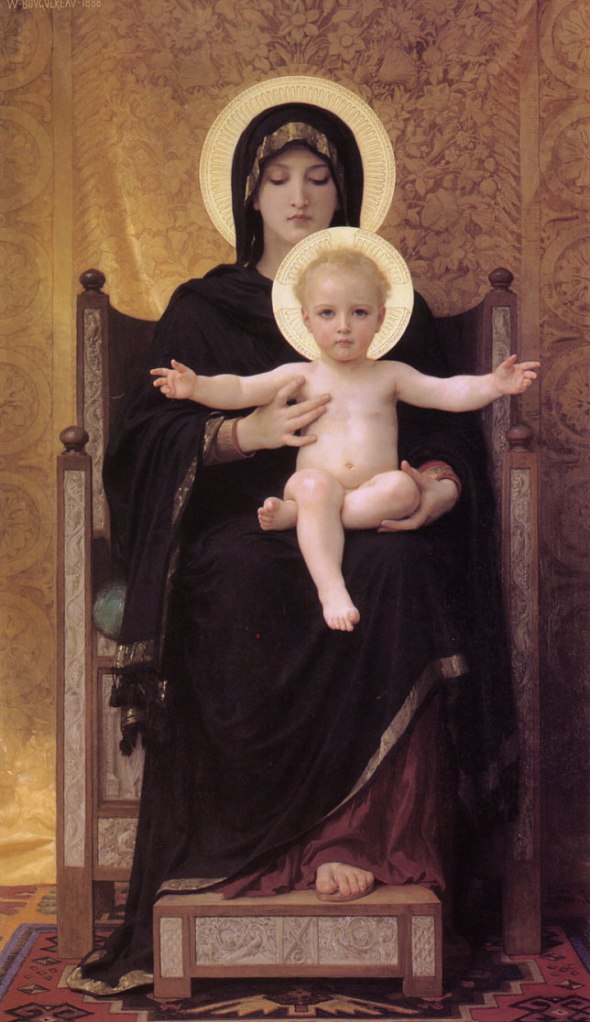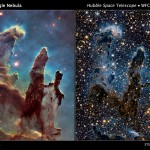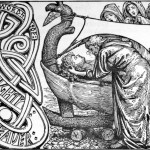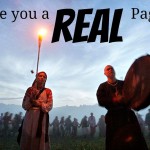Neo-Paganism has multiple centers, including Earth, Deity, and Self. This is the seventh in an 8-part series that explores Neo-Paganism as a Self-Centric “mystery religion”. This essay was originally published at Neo-Paganism.org.

In some version of Neo-Pagan myth, the Goddess and the God represent two dimensions of life: The Goddess represents the whole, while the God, her son, represents the part. The Goddess, is the eternal cycle of the whole, the unity of life and death as a single process. The God is manifest life, subject to the cyclical process of birth, flowering, decay, death and rebirth. This distinction resembles the distinction between Indian concepts of Brahman and atman and between natura naturans (nature naturing) and natura naturata (nature natured) drawn by Spinoza, Emerson, Coleridge, Robert Corrington and others.
“The Great Goddess … was the arch personification of the power of Space, Time, and Matter, within whose bound all beings arise and die: the substance of their bodies, configurator of their lives and thoughts, and receiver of their dead. And everything having form or name—including God personified as good or evil, merciful or wrathful—was her child, within her womb.”
– Joseph Campbell
“The Goddess is the Encircler, the Ground of Being; the God is That-Which-Is-Brought-Forth, her mirror image, her other pole. She is the earth; He is the grain. She is the all encompassing sky; He is the sun, her fireball. She is the Wheel; He is the traveler. He is the sacrifice of life to death that life may go on. She is the Mother and Destroyer; He is all that is born and is destroyed.”
— Starhawk
According to Karl Kerenyi, in ancient Greek, the words zoe and bios both meant “life”, but two different dimensions of life. Zoe signified infinite and universal life, while bios referred to the finite and individual life. Zoe was Life itself, while bios was the living and dying manifestation of Zoe in time and space. Bios is the immanent form of a transcendent Zoe. Together, these two words express the two dimensions of existence: the eternal and the transitory, the unmanifest and the manifest, the universal and the particular. In mythological terms, the Goddess is Zoe, and the God is bios.
The moon may be thought of as a symbol of this relationship. The moon is always changing yet was always the same. The visible, manifest moon is always changing, a constant interplay of light and dark. What remains the same is the enduring cycle, whose unmanifest totality can never be seen in any single moment. The cycle does not change; it is change. The same analogy could be drawn to any natural cycle, like the seasons or the life cycle of plant and animal life.
The Neo-Pagan Goddess may be called Mother, because she is the eternal Source, the continuous principle of Life which gives rise to life in its myriad forms. The Goddess does not die; she is death … and life. The Goddess gives birth to the God, who is manifest life, and then receives him back into the tomb that is her womb. The God is born lives, dies and is born again. He must accept death, falling back into the Source, like a seed returning to the earth, while the Goddess endures to bring forth new forms of life from the inexhaustible store that is her Being. Bios is born from Zoe, dies back into Zoe, and is reborn from Zoe. In this view, death is not an end, but a transformation. What, at the level of bios, appears as dismemberment and disintegration, is revealed, at the level of Zoe, as rebirth.
In some Neo-Pagan myth, the sacred marriage (hieros gamos) of the Goddess and the God symbolically connects Zoe and bios, bringing together eternity and time, the infinite and the individual. And through some Neo-Pagan ritual we can come to participate in this union, effecting a change of consciousness toward our individual deaths. Death is understood to be no less sacred than life. Rather than an end, death becomes transformation and metamorphosis. The ego-centric perspective is transcended through identification with the eternal cycle of birth, life, and death. The individual can then look forward to the death that somewhere awaits them knowing that no one and no thing dies in vain. No virtue or energy is lost. There is only change and transformation. Time and death are only tragic from the limited perspective of the ego, which must be sacrificed in order to find meaning. We not only come to terms with our annihilation, but develop the will to summon it when it is time.
For more information, check out The Myth of the Goddess: Evolution of an Image by Jules Cashford and Anne Baring and The Moon: Myth and Image by Jules Cahsford.















